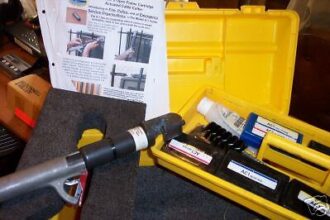Leonardo da Vinci—the name itself evokes innovation, artistry, and genius. From breathtaking art to ingenious inventions, his contributions continue to inspire us centuries later. Among the lesser-known yet fascinating tools he used is the bussola (compass), an elegant instrument designed for measuring angles within a circle with precise accuracy. Simple yet ingenious, the bussola to measure angles within a circle leonardo da vinci demonstrates Leonardo’s unparalleled ability to blend art, science, and practicality.
But how exactly does a bussola to measure angles within a circle leonardo da vinci work? And how can you use one to measure angles within a circle? Whether you’re a hobbyist, an artist, or just someone curious about historical tools, this guide dives into all there is to know.
What is a Bussola? Its History and Significance
The bussola to measure angles within a circle leonardo da vinci isn’t just any compass—it’s an artisanal instrument from the Renaissance, made famous by its use in drafting, architecture, and astronomy. During a time when precision was often achieved through ingenuity, da Vinci’s application of the bussola stood out.
The bussola to measure angles within a circle leonardo da vinci typically features a circular base and a movable arm, which is used to measure angles while rotating around the center of the circle. This tool was instrumental in architectural designs, cartography, and even artistic perspectives, offering an accurate way to calculate proportions and dimensions.
For Leonardo da Vinci, the bussola to measure angles within a circle leonardo da vinci wasn’t just a tool but an extension of his scientific and artistic pursuits. It allowed him to study the relationship of angles, symmetry, and geometry—fundamental concepts reflected in his iconic works like Vitruvian Man and The Last Supper.
Today, the bussola continues to be a symbol of timeless precision, standing as a testament to Leonardo’s innovative spirit.
Understanding the Mechanics of the Bussola
Before we jump into its practical use, it helps to understand how the bussola works. While there are modern adaptations, a traditional bussola has several key components:
- Circular Base: The foundation of the instrument. It serves as the surface where angles are measured, often marked with degree increments (0°–360°).
- Central Pivot Point: The fixed center of the bussola, where the measuring arm rotates.
- Movable Measuring Arm: The primary component used to indicate angles on the circular scale.
- Degree Markings: A numerical scale inscribed along the edge of the circular base, enabling precise measurement.
These elements work in unison to provide an intuitive way of determining angles. Think of the bussola as a timeless protractor—simple to use yet packed with potential.
Step-by-Step Guide to Using a bussola to measure angles within a circle leonardo da vinci
To get started, you’ll need a bussola to measure angles within a circle leonardo da vinci, a piece of paper (or another surface), and something to draw or mark with. Here’s your step-by-step tutorial on mastering this historic tool:
Step 1. Align the Bussola
Place the bussola’s circular base on your surface, ensuring it fits snugly. Identify the point at the center of the circle, where the pivot pin is fixed. This will act as your reference point.
Step 2. Mark Known Points
Mark two points on the edge of your circle that represent the end points of your angle. These might be two points of interest, such as corners of a shape or vertices of a triangle.
Step 3. Position the Measuring Arm
Rotate the bussola to measure angles within a circle leonardo da vinci movable arm so it lines up with one of your marked points (Point A). This fixed alignment creates a baseline for measuring the angle.
Step 4. Measure the Angle
Move the measuring arm toward the second point (Point B), and note the degree marking where the arm intersects the circular scale. The number shown represents the exact angle formed between these two points and the central pivot.
Step 5. Mark or Record the Angle
Once measured, either record the calculated angle for your project or use the arm to draw precise lines on your work surface.
Practical Applications of Measuring Angles
The beauty of the bussola to measure angles within a circle leonardo da vinci lies in its versatility. While it may sound niche, mastering this tool unlocks endless creative and professional possibilities.
1. Historical Significance
Historically, the bussola to measure angles within a circle leonardo da vinci played a pivotal role in engineering and architecture, helping Renaissance visionaries establish perfect proportions, symmetry, and functionality. Da Vinci himself leveraged tools like the bussola to design intricate bridge sketches and construction blueprints.
2. Modern Architecture and Engineering
Even in the 21st century, the principles of the bussola to measure angles within a circle leonardo da vinci are mirrored in engineering and drafting tools, from CAD systems to 3D modeling software. Architects can calculate precise angles for structural beams, domes, and arches—all inspired by past tools like the bussola to measure angles within a circle leonardo da vinci.
3. Artistic Perspective
For artists, this instrument is an indispensable aid in creating realistic perspectives. It helps determine exact vanishing points, lines of symmetry, and angles in visually complex compositions. Da Vinci would certainly approve!
4. Mathematics and Education
Mathematics educators often use traditional or digital replicas of the bussola to teach concepts surrounding geometry and trigonometry, adding a fun, hands-on element to the learning experience.
Key Tips for Accurate Measurements
While using a bussola is relatively straightforward, keep these tips in mind to ensure accuracy and avoid common pitfalls:
- Anchor the Base: Always secure the circular base to prevent shifting during measurements. Even minor movements can distort your results.
- Use a Flat Surface: To ensure precision, work on a completely level and stable surface.
- Avoid Overloading: If you’re marking angles on paper, keep your workstation clutter-free to protect both the bussola and your project from damage.
- Double-Check Angles: Measure each angle twice to confirm your calculations, particularly for designs requiring exact dimensions.
What Makes the Bussola Relevant Today?
The brilliance of the bussola isn’t limited to its historical origins. Even in an age dominated by digital innovations, tools like the bussola underline the importance of manual craftsmanship and understanding geometric fundamentals.
More importantly, studying historical tools such as the bussola gives us insight into problem-solving methodologies that have stood the test of time—a testament to the ingenuity of visionaries like Leonardo da Vinci.
Share Your Journey with the Bussola
Whether you’re exploring geometry, working on an artistic project, or simply indulging your curiosity about Renaissance inventions, the bussola offers a unique and enriching experience.
Have you tried using a bussola to measure angles within a circle leonardo da vinci? Share your story and creations with us! If you’re interested in learning more about historical tools and techniques, check out our blog for further content that dives into the genius of Leonardo da Vinci and beyond.













